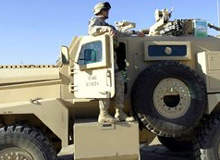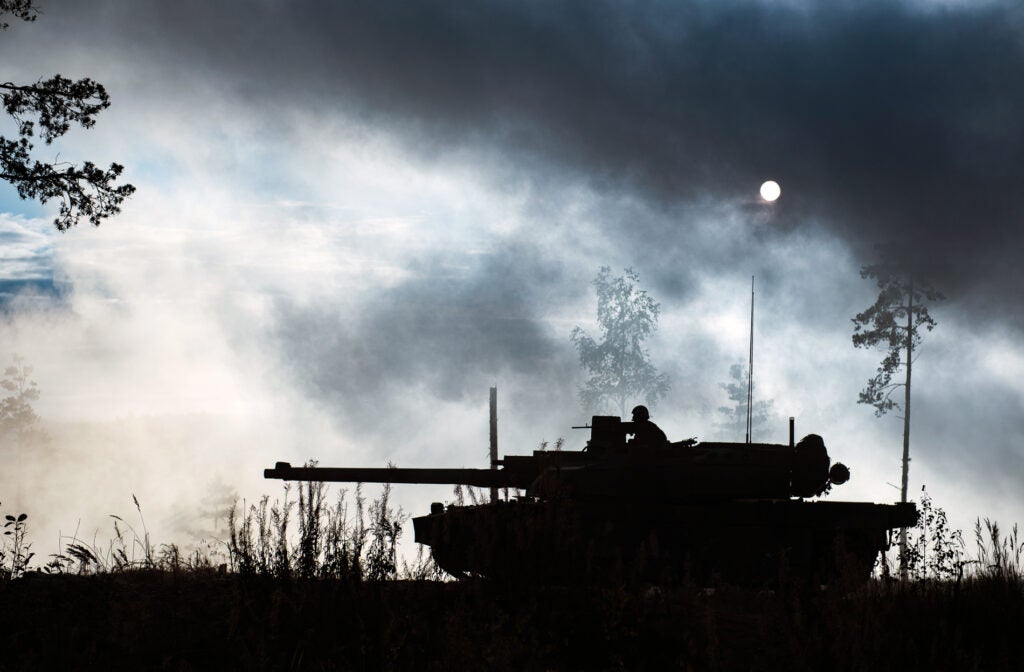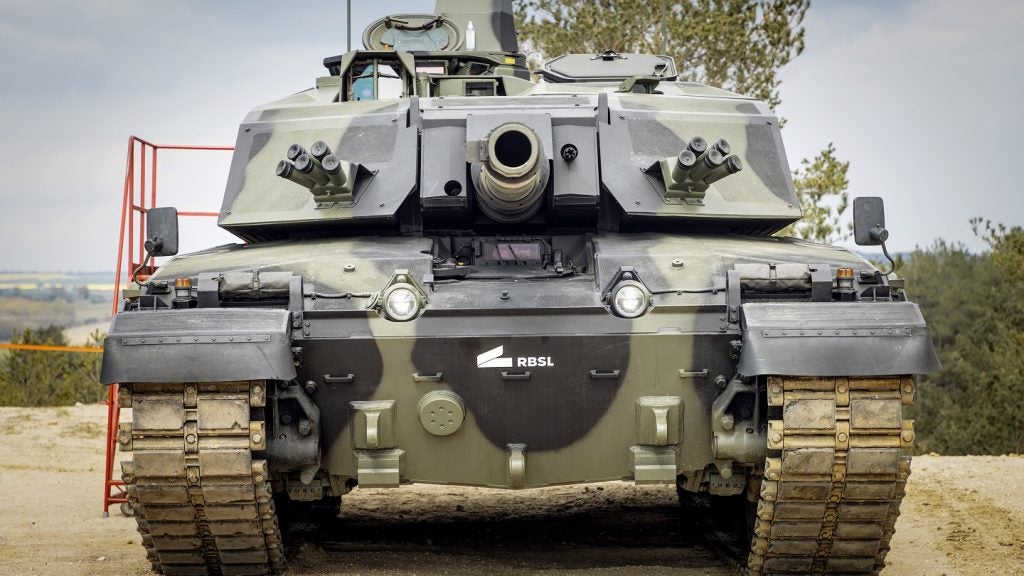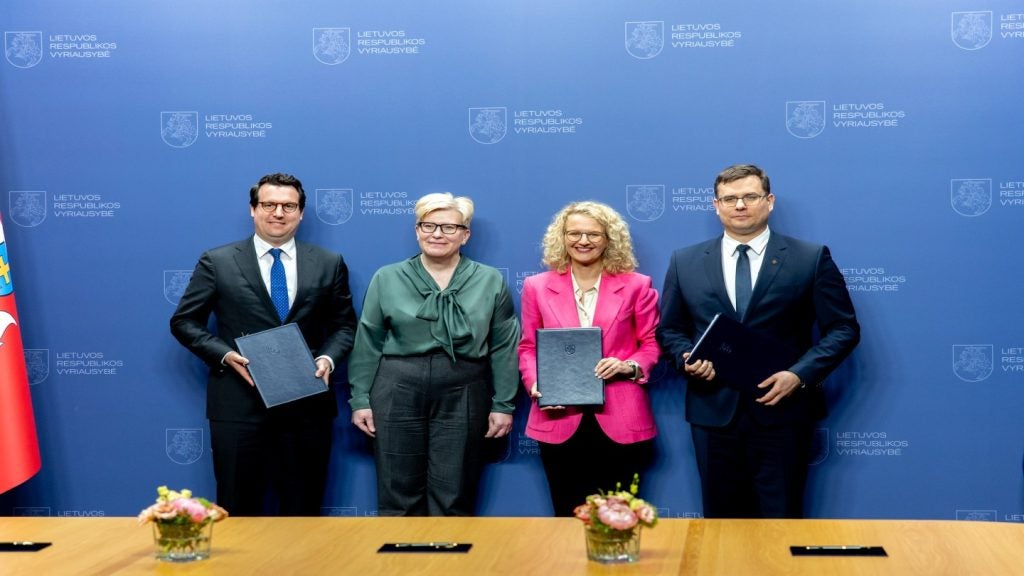
It’s a typical day in Iraq for staff sergeant Neal Feldmann. The sun is shining and, as part of his job as combat engineer for the US Army’s 2nd Brigade Combat Team, 10th Mountain Division, he’s out clearing the route to ensure safe passage for the rest of his convoy. What he doesn’t realise is, he’s about to fall into a trap.
An IED (improvised explosive device – also known as a roadside bomb) has already detonated in front of him but having decided that there’s no further danger his vehicle continues on its way. This is what the enemy wants.<?p>
As staff sergeant Feldmann’s RG-31 draws level with the pothole created by the first IED, a watching enemy soldier pushes a button and a second bomb explodes, directly underneath.
“There was a loud bang and lots of dirt and dust inside the vehicle. There was so much smoke you couldn’t see the person in front of you,” Fieldmann says. “But you just employ the techniques and tactics you’ve been taught to ensure the personnel and vehicle are OK and then carry on [with] your mission.”
Not all military convoys are so lucky, however. In December 2006 alone, 70 of the 118 coalition casualties in the Iraq war were caused by IED attack. Hence, Feldmann enjoys the protection offered by driving Buffalo and RG-31 mine-protected vehicles.
Feldmann and his colleague, specialist James Keelan, can spend between four to 37 hours at any one time out on the road. As combat engineers operating out of Camp Striker, just south of Baghdad airport, it is their job to clear routes so the rest of their convoy can pass safely.
How well do you really know your competitors?
Access the most comprehensive Company Profiles on the market, powered by GlobalData. Save hours of research. Gain competitive edge.

Thank you!
Your download email will arrive shortly
Not ready to buy yet? Download a free sample
We are confident about the unique quality of our Company Profiles. However, we want you to make the most beneficial decision for your business, so we offer a free sample that you can download by submitting the below form
By GlobalData“You’re always on the lookout for anything out of the ordinary, like a wire or anything that looks suspicious,” Keelan says. “We know the things to look out for.” This constant scanning provides Feldman, and his following convoy, with the safety required to continue operating in such a demanding environment, according to Feldmann.
“You’re not on edge because you’re comfortable with the techniques and tactics you’ve been taught and with the vehicles you’ve been given. The rest of the convoy can be directly behind us or hours behind,” Feldmann says. “What we do is not 100% successful but it gives piece of mind for the soldiers in the vehicles travelling behind.”
HUMAN ERROR AND IEDS
One threat to convoy life comes from within. Ex-serviceman have been known to grumble about troops in turrets being unprepared and not carrying their weapons, soldiers falling asleep when they are meant to be on the ball and vehicles stopping for no apparent reason.
“A convoy in a hostile environment needs to keep moving no matter what,” an ex-serviceman posted on the International Association of Counterterrorism and Security Professionals website.
“If stopping cannot be prevented every soldier in the convoy needs to be at the ready. Too often there are troops in turrets sitting on their butts with their hands off their weapon systems.”
But mistakes do occur and error can lead to accidents, according to Feldmann.
“We’re all human – we all make mistakes but we don’t call it human error. I’d never tell anyone they made a mistake. The Red Sox can win seven games in a row and then lose one – is that human error or is it fatigue? All we know is that we are far superior to the insurgents and we’ve proved that many times.”
As Keelan puts it: “Sure, it happens but there’s no way to eliminate it.”
By far the biggest threat faced by convoy troops in Iraq today is the IED. According to the record and testimony of the US defence department, since the war in Iraq began more than 3,398 US servicemen have lost their lives – 70% in an IED attack (figure stands for 16 May 2007).
“IEDs are the biggest threat we encounter,” Feldmann says. “I’ve been out here for nine months and in that time we’ve found 150 IEDs and been struck 60 times, so in that time that’s 210 IEDs.”
IED – IMPROVISED EXPLOSIVE DEVICE
An IED is an improvised bomb which incorporates destructive, lethal, noxious, pyrotechnic or incendiary chemicals – it is designed to blow up people and vehicles. IEDs typically contain an explosive charge, a detonator and an initiation system. They are triggered by remote control, infrared or magnetic triggers, pressure-sensitive bars or trip wires.
What makes IEDs so dangerous is the fact that they can be manufactured anywhere by anyone with materials that are readily available. It is not uncommon for IEDs to be produced using agricultural and medical supplies by people who’ve found instructions on the internet. This means that, with no standard production formula, IEDs are difficult to track and detect.
It is a threat that is constantly evolving, according to Wayne Phillips, the vice president of Force Protection, a company that manufactures the Buffalo mine-protected clearance vehicles.
“The enemy is very adaptable,” Phillips says. “We come up with something to counter what they are doing and they counter it right back. It’s an ongoing battle.”
Force Protection is not the only company working to keep troops safe from IED attack. The RG-31 Nyala is another multi-purpose mine-protected vehicle made by Land Systems OMC in South Africa. Its success at resisting IEDs is, in part, due to its steel-welded monocoque hull – as of January 2007 the US army had over 400 RG-31s in service.
THE NEW COMBAT FRONTLINE
Since Force Protection started supplying its Buffalo vehicles in Iraq and Afghanistan in 2003, there have been no fatalities due to IED attack, according to a Fox News Channel report broadcast on 31 October 2006.
“Our senior scientist is in my opinion the most pre-eminent blast and mine protective authority in the US,” says Philips. “Everything on the outside of our vehicles is made to be blown off, it’s expendable. We concentrate on protecting the engine and the people inside. I can’t say too much about how we do it but we use armour, different combinations of materials and jamming equipment.”
Everyone knows that the law of the jungle applies in combat situations – the fittest survive, so it is fitting that the vehicles designed by Force Protection to give soldiers the edge in the age-old convoy war are named Buffalo, Cougar and Cheetah.
The Buffalo Mine-Protected Clearance Vehicle (MPCV) incorporates the most powerful blast and ballistic protection available with detection and removal capability, including a robotic arm measuring 30ft and an iron claw mounted with camera and sensory equipment. This allows personnel to examine potential threats from within the safety of the vehicle’s armoured hull. The Buffalo is the sole source for the US Defense Department’s category III Mine-Resistant Ambush-Protected (MRAP) vehicle.
There are two cougars – the 4×4 mine-resistant medium vehicle, which is designed for ordnance removal, command and control and lead convoy missions, and the 6×6 mine-protected field ambulance. Both are used as MRAP vehicles.
The Cheetah is Force Protection’s newest vehicle series. It combines state-of-the-art ballistic-protection technology with the mobility of a unique light-armoured vehicle and is designed specifically for light tactical, reconnaissance, communication and urban operations. With a nuclear, biological and chemical overpressure system option, it is a perfect fit for emergency response teams and forward mobile command posts.
THE EVOLVING IED THREAT
Convoy protection is not new. Since the US Indian wars with Native Americans in the 19th century, convoys have become a major target, largely due to the people and supplies they carry.
Threats have changed over the years from the arrows of the American Indians to the bullets of the world wars and the guerrilla tactics of today.
This threat means organisations such as Force Protection have to be incredibly light on their feet. Force Protection designed its newest vehicle, the Cheetah, in just one year after the US army raised warning of a new kind of IED threat.
“It’s hard to put a time frame on the production of a new vehicle but it has to be done quickly because there’s a need in the field for it,” Phillips says.
SAFE FROM HARM
Feldmann says mine-protected vehicles offer a new level of confidence in dealing with IEDs. “We’re not allowed to talk about specifics but the vehicles are designed to force energy away from you. It’s basic science,” he says.
But Feldmann says more of these vehicles are required to carry out operations with the maximum amount of efficiency and the best result. “You ask anybody here; we just need more vehicles. If one of these vehicles goes down you either have to give up your mission or carry on in a less safe vehicle. That’s when you feel on edge.”
The US Government is currently increasing the number of IED vehicles it uses in military hotspots. Force Protection’s Phillips says his company alone has received a recent order for an extra 1,000 of these vehicles.
And according to Keelan and Feldmann, you cannot have enough of these life-saving vehicles in a place where a beautiful sunny day can easily become a nightmare with nothing more than the push of a pedal.







